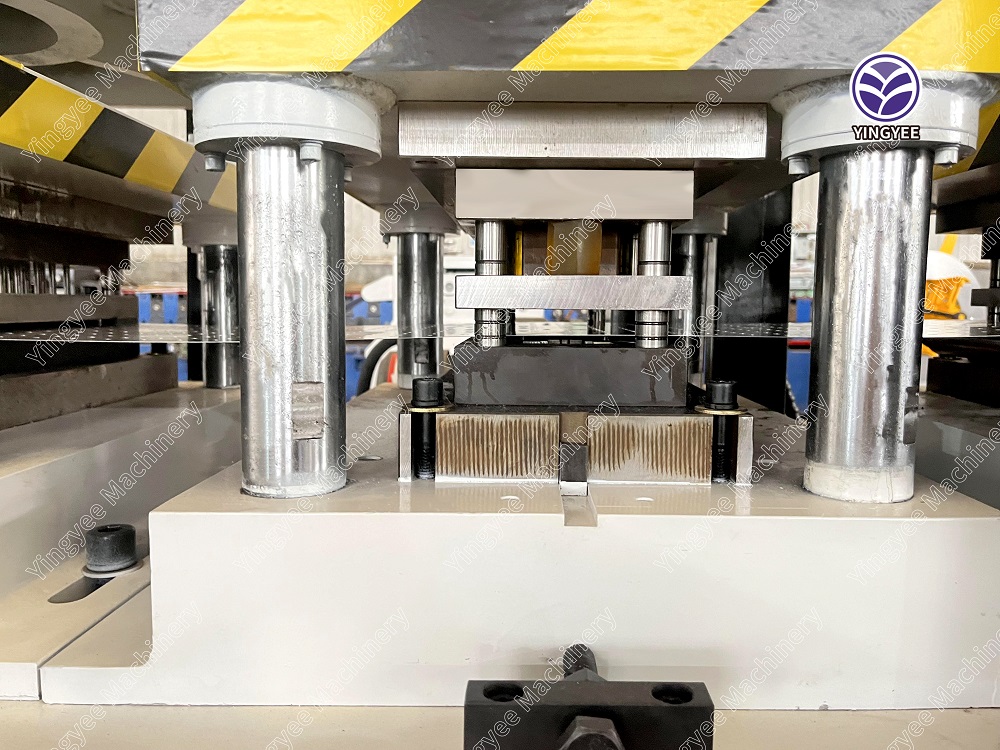
The Single C Purlin Forming Machine Revolutionizing Metal Construction
The construction industry has seen significant advancements over the years, particularly with the introduction of various types of machinery aimed at enhancing efficiency and productivity. Among these innovations, the single C purlin forming machine stands out as a pivotal development. This machine has revolutionized the way purlins are manufactured, providing a streamlined process that not only saves time but also reduces material waste and lowers overall costs.
Understanding C Purlins
Before delving into the specifics of the forming machine, it is essential to understand what C purlins are. C purlins are horizontal structural members used in buildings and other structures, typically made of cold-formed steel. They play a crucial role in providing support to roofs and walls, acting as a framework for various types of cladding materials. Their shape, which resembles the letter 'C', offers excellent strength-to-weight ratios, making them a preferred choice in modern construction.
The Need for Efficiency
Traditionally, the manufacture of purlins involved lengthy processes that required significant manpower and resulted in considerable scrap material. As construction demands have grown, there has been an increasing need for machinery that can produce high-quality steel purlins quickly and with minimal waste. The introduction of the single C purlin forming machine addresses this need head-on.
How the Single C Purlin Forming Machine Works
The single C purlin forming machine operates through a series of stages that transform flat steel sheets into finished C purlins. Initially, the machine feeds a coil of steel into the roll forming system, which continuously shapes the metal into the desired profile. This process involves several rollers that incrementally bend the steel to achieve the precise measurements required.
One of the critical features of these machines is their ability to produce purlins of varying sizes. By adjusting the machine settings, operators can customize the width and height of the purlins to meet specific project requirements without needing to change tools or machinery. This versatility not only increases productivity but also allows manufacturers to fulfill a wider range of client needs.

Benefits of Using a Single C Purlin Forming Machine
1. Increased Efficiency The automated nature of the forming machine significantly reduces the time required to produce purlins. While traditional methods may take hours or even days to complete a single batch, these machines can accomplish the same task in a fraction of the time.
2. Reduced Material Waste The precision of the forming process minimizes scrap material, which is a substantial cost-saving factor in construction. The ability to produce purlins with exact specifications means that less material is wasted during production, leading to increased sustainability.
3. Lower Labor Costs Automation in manufacturing translates to reduced labor requirements. Fewer workers are needed to operate the machine, allowing companies to allocate their workforce more efficiently and focus on other critical tasks, such as installation.
4. High Precision and Quality The use of advanced technology in the forming process ensures that each purlin is produced with high accuracy. Consistent quality across batches means that builders can rely on the materials they are using, which is crucial for the integrity of the structure.
5. Customization As mentioned earlier, the ability to adjust the dimensions of the purlins on the fly makes the single C purlin forming machine incredibly adaptable. This is particularly beneficial in a market where bespoke solutions are often required.
Conclusion
In summary, the single C purlin forming machine is a game-changer in the realm of metal construction. By providing a high-efficiency, low-waste solution for the production of C purlins, this machine not only improves the manufacturing process but also contributes to the sustainability of construction practices. As the industry continues to evolve, it is clear that machinery like this will play a vital role in shaping the future of building design and construction efficiency. Embracing these technologies will ultimately lead to stronger structures, lower costs, and a more sustainable approach to construction.